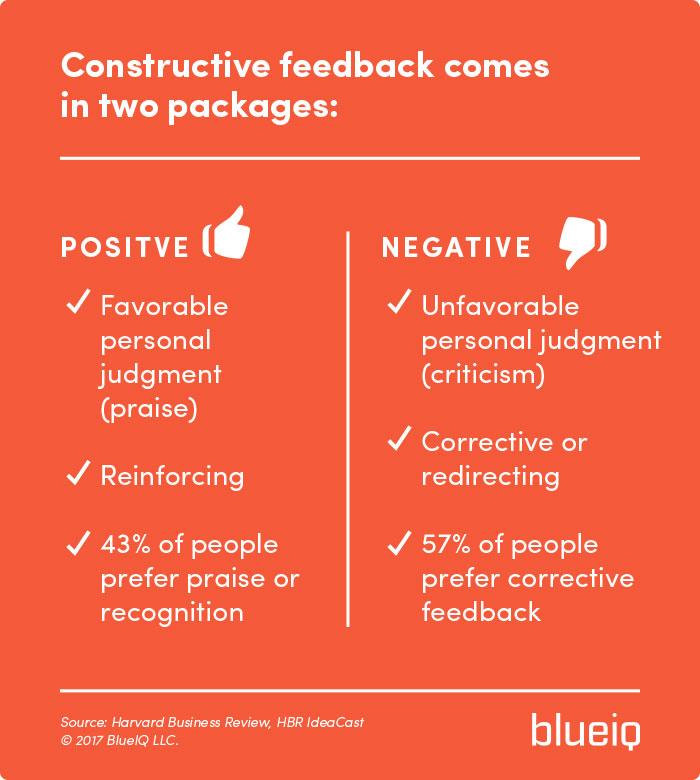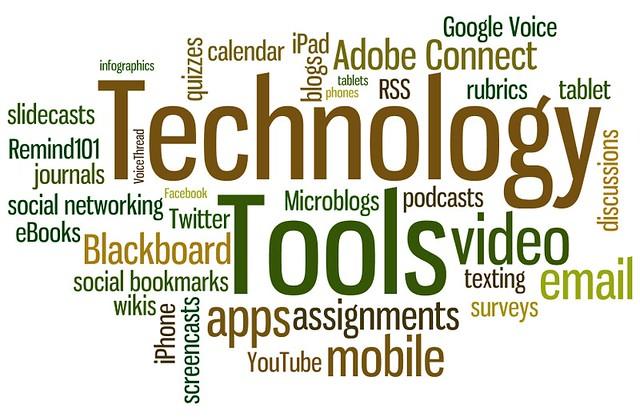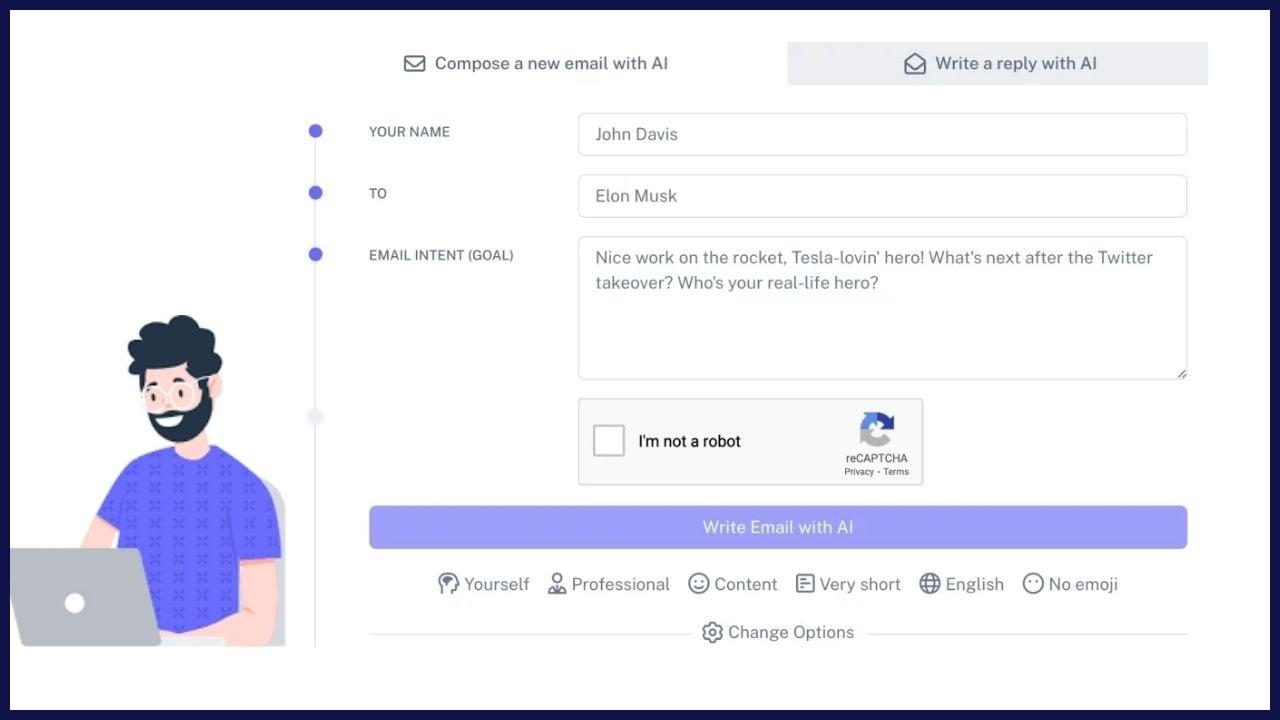Introduction:
In the ever-evolving landscape of online education, the role of collaboration between students and instructors has never been more crucial. Picture this: you’re navigating an engaging online course, filled with intriguing content, but you feel lost or disconnected from your instructor. sound familiar? You’re not alone! Many students grapple with the challenges of remote learning,often wishing for a more interactive and supportive environment. That’s where the magic of collaboration comes into play.
In this article, we’ll explore over eight powerful strategies that can help you forge a stronger connection with your instructors, enhancing both your learning experience and academic success.Whether you’re a seasoned online learner or just starting your journey, these tips will empower you to take charge of your education. We’ll break down practical, easy-to-implement techniques that can transform your online courses from solitary endeavors into rich, collaborative experiences. Ready to supercharge your learning and build that essential bridge with your instructors? Let’s dive in!
Understanding the Importance of Instructor Collaboration for Student Success
in the realm of online education, the synergy between instructors and students can significantly influence the learning experience.When instructors collaborate not just with students but also amongst themselves, a richer, more cohesive educational environment is created. This collaboration allows for a sharing of insights, resources, and diverse perspectives, ultimately benefiting student success.
One of the most effective methods of enhancing student engagement is through regular communication. Instructors who establish open lines of dialog encourage students to voice their concerns, seek clarification, and participate actively in discussions. By utilizing platforms like forums or group chats, instructors can foster a sense of community that enhances both learning and collaboration.
Additionally, creating interdisciplinary projects can provide students with a broader understanding of how various fields interconnect. When instructors from different subjects collaborate on projects or assignments, students can see real-world applications of their studies. This not only deepens their understanding but also equips them with the skills needed to approach problems from multiple angles.
Another strategy is to develop shared resources. Instructors can pool their materials, lesson plans, and multimedia resources, making them accessible to all. This practise not only saves time but also ensures that students benefit from a wider array of learning tools. When instructors work together to curate a library of resources, they empower one another and enhance the overall quality of education offered.
Lastly, establishing peer review systems among instructors encourages continuous improvement.By regularly assessing each other’s teaching methods and providing constructive feedback, instructors can refine their approaches and adopt best practices.This collaborative effort ultimately translates to better student outcomes, as enhanced teaching techniques are directly reflected in student engagement and success.
Building Strong Relationships with Your Instructors
Building a rapport with your instructors is essential for success in online courses. Establishing a strong connection can enhance your learning experience and provide you with valuable insights and support. Here are some effective strategies to foster these relationships:
- Engage Actively in Discussions: Participate in discussion boards and comment on your instructor’s posts. share your thoughts and ask questions to show your interest in the subject matter.
- Utilize Office Hours: Take advantage of virtual office hours to discuss course content, clarify doubts, or seek guidance. This one-on-one interaction can help you feel more connected.
- personalize your Communication: When reaching out via email or messaging platforms, address your instructor by name and tailor your message to demonstrate genuine interest in their expertise.
In addition to these strategies,consider the following approaches to deepen your relationship with your instructors:
- Provide Feedback: If you find an assignment or course material notably helpful,let your instructor know. Constructive feedback can foster a positive relationship and show that you value their efforts.
- Collaborate on Projects: If given the prospect, propose to collaborate with your instructor on a project or research. This not only showcases your initiative but also allows you to learn from their experience.
- Show Appreciation: A simple thank you can go a long way.Acknowledge your instructor’s hard work and dedication, whether through a message or a post in the course forum.
To visualize some of these strategies and their benefits, here’s a simple table that summarizes how they can enhance your learning experience:
| Strategy | Benefit |
|---|---|
| Engage Actively | Increased participation and understanding of course content. |
| Utilize Office Hours | Personalized support and clarification on topics. |
| Personalize Communication | Shows respect and builds mutual recognition. |
| Provide Feedback | Creates an open communication channel and encourages improvement. |
| Collaborate on Projects | Offers practical experience and deepens understanding. |
| Show Appreciation | Fosters a positive and respectful relationship. |
By implementing these strategies, you can cultivate strong relationships with your instructors, paving the way for a more enriching online learning experience.Mutual respect and proactive engagement will not only benefit your academic journey but also help you create lasting connections in your educational career.
Effective Communication: The Key to a Productive Partnership
Communication is the bedrock of any successful relationship, especially in the context of online learning. When collaborating with instructors, establishing a solid line of communication can significantly enhance your educational experience. Here are some strategies to ensure that your dialogues with educators are both meaningful and productive.
- Be Proactive: Don’t wait for your instructor to reach out. Initiate communication by introducing yourself and expressing your eagerness to collaborate. This demonstrates your commitment and sets a positive tone for future interactions.
- Utilize Multiple Channels: Make the most of available communication tools.Whether it’s course forums, direct emails, or virtual office hours, each platform has its strengths. Tailor your messages accordingly to enhance clarity and engagement.
- Ask Questions: Don’t hesitate to seek clarification on assignments or concepts that seem unclear.Thoughtful questions not only show your engagement but can also lead to deeper discussions and insights.
- Provide Feedback: Constructive feedback can help instructors understand student perspectives better. Share your thoughts on course materials, teaching styles, and assignments to foster a two-way dialogue.
- Be Respectful of Time: Instructors often juggle numerous responsibilities.When reaching out,be concise and considerate of their schedule,which can foster a more favorable response.
Furthermore, maintaining a professional demeanor is crucial.Authenticity should blend with professionalism in your communications.Use appropriate language and tone to reflect both your personality and the academic context. This balance can lead to a more respectful and effective partnership.
consider establishing a regular check-in schedule with your instructor. Setting aside time for discussions about progress, challenges, and upcoming assignments can create a structured framework for your collaboration. This not only keeps both parties accountable, but it also allows for ongoing feedback and adjustments to the learning approach.
| Strategy | Benefit |
|---|---|
| Proactive Communication | Establishes a positive tone and shows commitment. |
| Diverse Channels | Enhances clarity and engagement through tailored messaging. |
| regular Check-ins | Keeps both parties accountable and encourages ongoing feedback. |
Leveraging Office Hours and virtual Meetings for Deeper Engagement
Office hours and virtual meetings present an invaluable opportunity for deeper engagement with instructors in online courses.These dedicated time slots are not just a chance to ask questions but also a platform to enhance understanding and build relationships. By actively participating in these interactions, you can significantly elevate your learning experience.
Be Prepared: Before attending office hours or virtual meetings, it’s crucial to come prepared. Make a list of topics or questions you want to discuss.This shows that you are proactive and respectful of the instructor’s time. Some effective strategies include:
- Review course materials: Familiarize yourself with recent lectures and assigned readings.
- Formulate specific questions: Focus on particular areas of confusion or interest.
- Consider sharing insights: Bring along any relevant findings or thoughts that could enrich the discussion.
Engage Actively: During these sessions, make sure to engage actively. don’t hesitate to voice your thoughts and contribute to the conversation. This not only helps solidify your understanding but also demonstrates your commitment to the course. Here are a few ways to engage:
- Ask open-ended questions: This encourages deeper discussion and allows instructors to elaborate on concepts.
- Share your experiences: Relate course content to personal experiences or current events, which can spark captivating dialogue.
- Take notes: Jot down key points from the discussion for future reference.
Follow-Up: After the meetings, the engagement shouldn’t stop. Following up with a thank you email or summarizing what you learned can definitely help solidify the relationship. Consider creating a table to track your engagement:
| Date | Instructor | Topics Discussed | Follow-Up Actions |
|---|---|---|---|
| MM/DD | Dr. Smith | Chapter 3 Concepts | Review notes, email questions |
| MM/DD | Prof.Johnson | Project Feedback | Revise project, send updates |
leveraging office hours and virtual meetings fosters a collaborative environment that enriches your online learning experience.By being prepared, engaging actively, and following up on discussions, you not only enhance your understanding but also build valuable connections with your instructors.

Utilizing Discussion Forums to Foster Interaction and Feedback
Discussion forums serve as dynamic platforms for students to engage with both peers and instructors, transforming passive learning into an interactive experience. By actively participating in these forums, students can clarify their understanding of course materials and receive personalized feedback from instructors, fostering a sense of community and collaboration.
To maximize the benefits of discussion forums, consider the following strategies:
- Ask Thoughtful Questions: Engage your instructors by posing questions that stimulate deeper discussions. This not only showcases your interest but also invites comprehensive insights.
- Share Relevant Resources: Contributing additional readings or materials can spark new conversations and provide varied perspectives on the topics discussed.
- Provide Constructive Feedback: When responding to classmates, offer suggestions and insights that enhance the dialogue. This encourages a culture of support and collaborative learning.
- Participate Regularly: Consistent engagement in forums creates momentum and signals your commitment to the course, prompting instructors to take notice and respond more readily.
- Utilize Multimedia: Enhance your posts with images, videos, or links to articles. This not only enriches the discussion but also caters to different learning styles.
When you actively contribute to discussion forums, you create opportunities for tailored feedback from your instructors. This feedback can be invaluable, helping you identify areas for improvement and encouraging academic growth. Additionally, the collaborative nature of forums can lead to diverse viewpoints and innovative ideas, enriching your learning experience.
| strategy | Benefit |
|---|---|
| Engage with Questions | Stimulates deeper conversation |
| Share Resources | Broadens understanding of topics |
| Offer Feedback | enhances collaborative learning |
| Participate Consistently | Demonstrates commitment |
| Use Multimedia | Cater to various learning styles |
Ultimately, the goal of discussion forums is to create a thriving academic community where ideas can flow freely. By taking an active role in these spaces, you not only enrich your own learning experience but also contribute to the collective knowlege of your peers. Embrace the power of discussion forums to enhance your online course experience!

Collaborative Projects: Working Together to Enhance Learning Outcomes
In the digital landscape of education, fostering a collaborative spirit between students and instructors can significantly enhance the learning experience. Here are several effective strategies to create a cohesive online learning environment:
- Open Communication Channels: Establishing regular and open lines of communication helps in building trust. Use discussion forums or chat tools to create a space for students to ask questions and share insights.
- Collaborative Assignments: Design assignments that require teamwork. This not only encourages collaboration but also helps students learn from each other’s perspectives.
- Peer Review systems: Implement peer review processes where students can give and receive feedback. This promotes critical thinking and enhances engagement with the course material.
- Incorporate Technology Tools: Utilize platforms such as Google Docs or Trello for group projects. These tools facilitate real-time collaboration,making it easier for students to work together,nonetheless of their location.
It’s also crucial to provide clear guidelines and support throughout the collaborative process. Consider these approaches:
- Set Clear Expectations: Clearly define roles and responsibilities within group projects to avoid confusion. This will help ensure that all students contribute meaningfully.
- Frequent check-ins: Schedule regular check-ins to monitor progress and address any challenges that may arise. This not only keeps everyone accountable but also reinforces a sense of community.
- Encourage Reflection: After completing collaborative projects, ask students to reflect on their experiences and the lessons learned. This fosters deeper understanding and personal growth.
Lastly, showcasing successful collaborative projects can inspire others. Consider creating a showcase page where exemplary projects are highlighted. This not only acknowledges students’ efforts but also serves as a motivational tool for peers.Here’s a simple format to display some project highlights:
| Project Title | team Members | Outcome |
|---|---|---|
| Community Health Initiative | John, Sarah, Alex | Improved local health awareness |
| Innovative Tech Solutions | Emma, Daniel, Mia | Developed a new app prototype |
By implementing these strategies, both students and instructors can harness the power of collaboration to drive not only academic success but also personal development, creating a vibrant and enriching online learning community.

Seeking Constructive Feedback: An Essential Step in Your Learning Journey
Engaging with your instructors can significantly enhance your online learning experience. One of the most effective ways to do this is by actively seeking constructive feedback. Understanding what you excel at and where you can improve is crucial for your growth as a learner. Here are some strategies to foster a productive dialogue with your instructors:
- Ask Specific Questions: Rather of vague inquiries, target specific areas where you need clarity or improvement. This not only shows your commitment but also helps instructors provide tailored feedback.
- Use the Feedback Loop: After receiving feedback, take the time to reflect on it and respond. Let your instructor know how you plan to act on their advice,demonstrating that you value their input.
- Share Your Goals: Communicating your learning objectives can help instructors give you more relevant advice. Whether you aim to master a specific skill or understand a complex concept, sharing your aspirations creates a collaborative environment.
Incorporating feedback effectively is not just about receiving it; it’s also about responding to it. Make it a habit to touch base with your instructors regularly. Establishing an ongoing dialogue can lead to more insightful feedback. Here’s a simple table to illustrate the benefits of maintaining communication:
| Communication Method | Benefit |
|---|---|
| Email Updates | Stay informed about assignment expectations and deadlines. |
| Discussion Forums | Engage with peers and instructors for diverse perspectives. |
| Virtual Office Hours | Get real-time feedback and clarifications on challenging topics. |
Feedback is a two-way street. Be open to constructive criticism and approach it with a growth mindset. remember, the goal is not just to complete assignments but to deepen your understanding and skills. By actively participating in the feedback process, you signal to your instructors that you’re serious about your education, which can lead to even more meaningful insights.
consider setting up regular check-ins with your instructors. This proactive approach allows for consistent feedback and helps establish a rapport that can make your learning journey more enjoyable and fruitful. By valuing their input and engaging with them thoughtfully, you can unlock a wealth of knowledge and support that will propel you forward.

Creating a supportive Learning Community with peers and Instructors
Building a vibrant and engaging learning community is essential for success in online courses. Collaboration with your peers and instructors fosters an environment where ideas flourish,questions are welcomed,and support is readily available.Here are some strategies to enhance your interactions and create a supportive atmosphere:
- Engage Actively in Discussions: Make a point to participate in discussion boards or forums. Ask questions, share insights, and respond to your classmates. This interaction not only boosts your understanding but also encourages others to engage.
- form Study Groups: Collaborate with peers to form study groups. These groups can meet virtually through video calls or chat platforms, providing a space for collaborative learning and shared resources.
- Utilize Office Hours: Take advantage of your instructors’ office hours. This personalized time can be invaluable for clarifying concepts and getting feedback on your progress.
- provide Constructive Feedback: When working on group projects, be open to giving and receiving feedback. Constructive criticism helps everyone grow and enhances the quality of group work.
- Share Resources: If you come across helpful articles, videos, or tools, share them with your peers.This not only aids your classmates but also establishes you as a supportive community member.
- Set Collaborative Goals: When working with others, establish shared goals for your projects or study sessions. Working toward a common objective strengthens connections and accountability.
| strategy | Benefits |
|---|---|
| active Engagement | Enhances understanding and fosters community |
| Study Groups | Encourages collaboration and resource sharing |
| Office Hours | Provides personalized support and guidance |
| Feedback Exchange | Improves quality of work and learning |
Creating an inclusive environment is also about respecting diverse perspectives. Embrace the unique experiences and viewpoints of your peers, as this diversity enriches the learning experience for everyone. Remember, a learning community thrives on mutual respect and support, so aim to uplift your classmates as you navigate the course together.
don’t hesitate to reach out to your instructors with questions or suggestions. Instructors appreciate feedback on course content and delivery. By expressing your thoughts, you play a vital role in shaping the course structure and supporting future students. Your voice matters in creating an enriching learning community!

embracing Technology Tools for Seamless collaboration
In the ever-evolving landscape of online education, leveraging the right technology tools can transform the way you collaborate with instructors. With a myriad of options available, selecting tools that enhance communication and streamline tasks is paramount. Here’s how you can maximize your collaborative experience:
- Video Conferencing Platforms: Tools like Zoom or microsoft Teams enable real-time discussions, fostering a more personal connection. schedule weekly check-ins to discuss course progress and clarify doubts.
- Collaborative Document Editing: Google Docs or Microsoft 365 allow both instructors and students to work on documents together. Use comments to provide feedback and suggestions, making the revision process seamless.
- project Management Tools: Platforms such as Trello or Asana can help organize tasks and deadlines. Create shared boards to track assignments, ensuring everyone stays on the same page.
To truly harness the potential of these tools, consider integrating them into your daily routine. For example, set aside specific times to check in on collaborative assignments or use chat features in your video conferencing tools to share fast updates. This not only keeps everyone aligned but also builds a culture of accountability.
Choosing the Right Tools
Not all tools will fit every course structure or individual preference. It’s crucial to:
- Assess Your Needs: Determine what aspects of collaboration are most challenging. Is it communication, document sharing, or task management? Tailor your tool selection accordingly.
- Experiment: Don’t hesitate to try different tools.Many offer free trials that allow you to gauge their effectiveness without commitment.
- Gather Feedback: Regularly ask your instructors for their input on the tools you’re using. Their insights can guide you in refining your approach.
Benefits of Effective Collaboration
Embracing these technological tools not only enhances your collaboration with instructors but also contributes significantly to your overall learning experience. Effective communication leads to:
| Benefit | Description |
|---|---|
| Improved Understanding | Clearer explanations and shared resources lead to better comprehension of material. |
| Increased Engagement | Active participation in discussions fosters a richer learning environment. |
| Networking Opportunities | Collaborating opens doors to build relationships with peers and instructors. |
By fully embracing these technology tools, you can create a more interactive and dynamic online learning experience. The effort you put into these collaborations can yield meaningful rewards, turning challenges into opportunities for growth and achievement.

celebrating Success and Acknowledging Contributions in Online Learning
In the ever-evolving landscape of online education,recognizing the achievements of both students and instructors is essential for fostering a thriving community. When you collaborate effectively with your instructors, it not only enhances your learning experience but also contributes to the overall success of the course. Here are some ways to celebrate these victories and acknowledge the hard work of everyone involved.
- Give Timely Feedback: Sharing your thoughts on assignments and course materials can go a long way. constructive feedback helps instructors understand what’s working well and what can be improved.
- Highlight peer Contributions: Acknowledge the insights and efforts of your classmates. Create a culture of appreciation where everyone feels valued for their input.
- Participate in Discussions: Engaging in discussions not only enriches your own understanding but also shows instructors that you are invested in the course. Highlight key points from your peers to show collective growth.
- Share Success Stories: If you or your classmates achieve something noteworthy,share these stories in class forums. This fosters a sense of community and motivates others.
Creating a sense of achievement can also be facilitated through structured recognition. Consider implementing a system where students can nominate their peers for various contributions.This not only boosts morale but encourages a collaborative spirit. Here’s a simple table to illustrate potential recognition categories:
| Category | Description |
|---|---|
| Outstanding Participation | Acknowledges students who regularly engage in discussions and activities. |
| Innovative Ideas | Recognizes those who contribute unique perspectives or solutions. |
| Peer Support | Rewards students who assist others in their learning journey. |
Additionally, consider organizing virtual celebrations at the end of each module or semester. These can be informal gatherings where everyone shares their achievements, challenges, and lessons learned. Such events can strengthen connections and build a positive learning environment. Acknowledge the contributions of instructors with shout-outs or awards for their dedication and hard work in supporting students.
In a virtual classroom, where physical presence is absent, it’s vital to be proactive in acknowledging the collective efforts that contribute to a successful learning experience. By embracing collaboration and celebrating successes, you’re not just enhancing your educational journey, but also empowering those around you.
Frequently Asked Questions (FAQ)
Q&A: Strategies for Collaborating with Instructors in Online Courses
Q1: Why is collaboration with instructors crucial in online courses?
A: Great question! Collaboration with instructors is crucial because it enhances the learning experience. When you engage actively with your instructors, you not only get personalized feedback but also build a rapport that can motivate you throughout the course. Plus, it helps clarify complex concepts and fosters a sense of community, which is frequently enough missing in online environments.
Q2: What’s the first strategy I should consider for collaborating with my instructor?
A: Start by actively participating in discussions. Whether it’s a discussion board or live class, sharing your thoughts and asking questions shows your instructor that you’re engaged. It opens up lines of communication and encourages them to invest more in your learning journey.
Q3: How can I effectively communicate with my instructor outside of class?
A: utilize email or messaging platforms thoughtfully. When reaching out,be clear and concise about your questions or concerns. Respect their time by keeping your messages professional and to the point. Remember, the more specific you are, the better they can assist you!
Q4: What role do office hours play in this collaboration?
A: Office hours are a golden opportunity! Make it a point to attend them—whether in person or virtually. Use this time to dive deeper into course material, seek guidance on assignments, or discuss your academic goals. It shows initiative and can lead to valuable mentorship.
Q5: Can peer collaboration enhance my relationship with instructors?
A: Absolutely! working with peers not only enriches your understanding but can also impress your instructors. When they see you engaging in collaborative projects or study groups, it reflects your commitment to the course and can encourage them to provide more support.
Q6: What if I’m struggling with the material? How can I collaborate more effectively?
A: Don’t hesitate to reach out! Be honest about your challenges. Instructors appreciate students who seek help and are genuinely interested in improving. They can provide additional resources or strategies tailored to your needs, which can be a game-changer for your success.
Q7: Should I provide feedback to my instructors?
A: Yes, definitely! constructive feedback can help improve the course for everyone. if you have suggestions or commendations about the course materials or teaching methods,share them respectfully.It shows that you value their efforts and are committed to the overall learning experience.
Q8: How can I leverage technology for better collaboration?
A: Embrace tools like discussion forums, group chats, or collaborative platforms like Google Docs. These resources can facilitate communication and teamwork, making it easier to bounce ideas off each other and keep your instructor in the loop about group projects or challenges.
Q9: What’s the takeaway message for students looking to collaborate with their instructors?
A: Be proactive, engaged, and respectful. Building a relationship with your instructors can significantly enhance your online learning experience. Don’t wait for them to reach out—take the initiative! Your education is a partnership,and the more you collaborate,the richer your learning experience will be.
The Conclusion
As we wrap up our exploration of strategies for collaborating with instructors in online courses, it’s clear that fostering strong connections can truly elevate your learning experience. By implementing these 8+ strategies,you’re not just passively absorbing information; you’re actively engaging with your instructors and peers,creating a vibrant educational community.
Think about it: when you collaborate, you open doors to new perspectives, insights, and opportunities. Whether it’s through regular communication, participating in discussions, or leveraging technology to enhance your interactions, every effort you make contributes to a richer learning environment.
So, why not take the plunge? Start by reaching out to your instructors today. Ask questions, seek feedback, and share your thoughts. remember, they’re not just teachers; they’re your partners in this journey. And who knows? You might just discover newfound motivation and passion for your studies along the way.
In a world that’s increasingly digital, let’s make our online learning experiences as dynamic and engaging as possible. Together, we can break down barriers, share knowledge, and build a community that thrives on collaboration. Happy learning!




